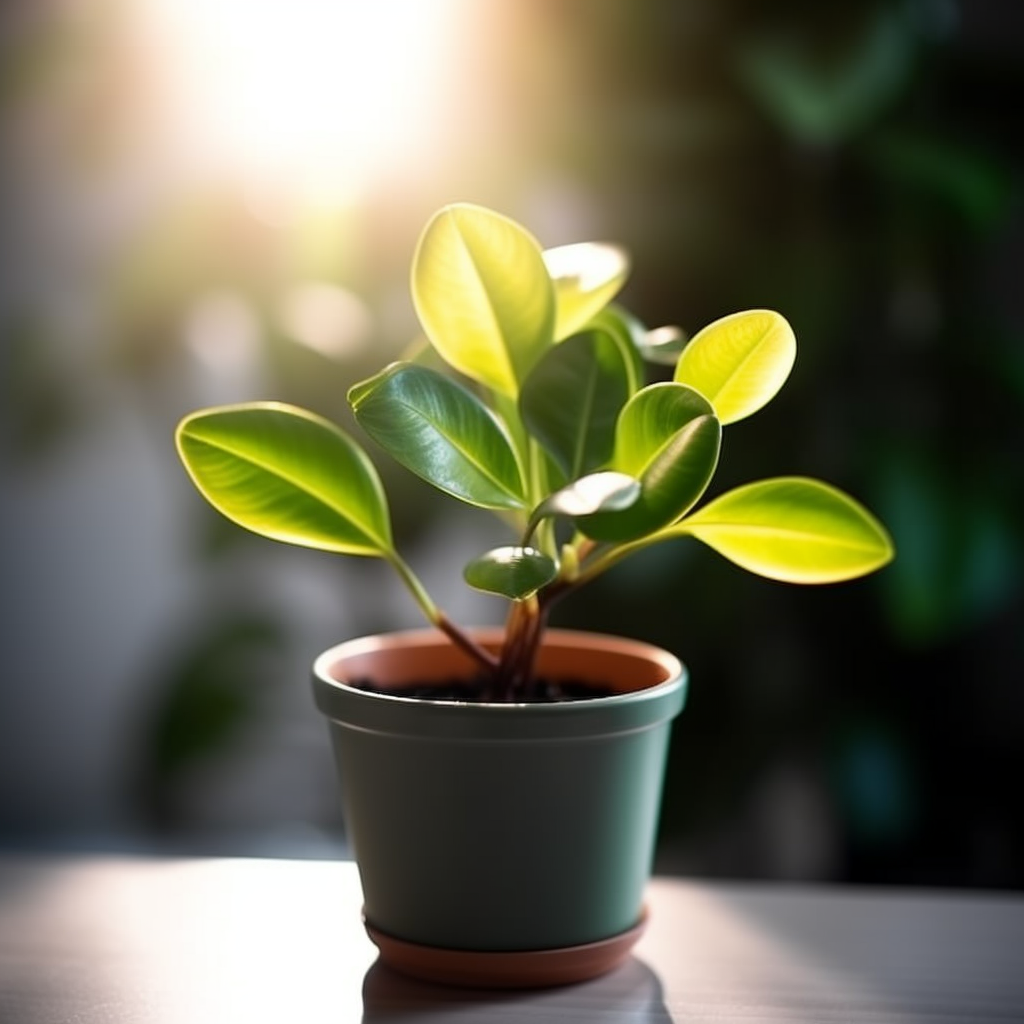Story of Day :
Contents
The Baby Rubber Plant: The Ultimate Guide to Care Tips
Are you looking for a plant that is easy to take care of and adds beauty to your home? Look no further than the Baby Rubber Plant! In this guide, we’ll cover everything you need to know about caring for this plant. From the basics of watering and sunlight requirements to tips on how to propagate it, we’ve got you covered.
What is a Baby Rubber Plant?
The Baby Rubber Plant, also known as Peperomia obtusifolia or Pepper Face, is a small indoor plant native to South America. It has dark green leaves that are round and fleshy in appearance. This plant can grow up to 12 inches tall and wide under ideal conditions.

Watering Requirements
One of the most important factors in caring for your Baby Rubber Plant is watering it correctly. Overwatering can cause root rot while underwatering can cause the leaves to wilt. To avoid these issues, follow these guidelines:
- Water your plant once a week during warmer months.
- In winter months reduce watering frequency but don’t let the soil dry out completely.
- Avoid getting water on the leaves or stem as they are sensitive.
- The best way of measuring water requirements is by pressing down gently on topsoil with fingers; if it feels dry then add some more water because if moist then don’t add any more!

Sunlight Requirements
While some plants require direct sunlight others like baby rubber plants do not thrive under such condition but they still require bright light nonetheless . These plants grow well under indirect sunlight too so it’s important to find a spot for your plant that receives sunlight but not the direct sun.
- Place your plant near window that faces east or west and not directly in front of south facing windows.
- If you live in an area where sunlight is not consistent, consider placing the baby rubber plant under fluorescent light bulbs to supplement natural light sources.

Fertilization
Fertilizing is also important for the growth and survival of Baby Rubber Plants. You can fertilize every 4-6 weeks during their growing season with any balanced liquid fertilizer diluted twice as much as suggested.
- Fertilizer should be added from Spring until Fall which is usually when they are growing actively.
- Do not over-fertilize them though because excess nutrients causes burning and scorching of leaves.

Propagation Techniques
Propagation is another way to increase population of baby rubber plants. It’s quite easy too!
Here’s what you need:
- Clean shears or scissors. (To avoid transferring diseases it’s good practice.)
- A small container with well-draining soil mix.( You could also use water instead by snipping off a healthy-looking stem.)
Some steps to follow include:- Cut a piece of leaf just below the node at around three inches long using clean shears or scissors.
- Dip the cut end into rooting hormone powder if desired (it helps speed up root formation).
- Pot up cutting in container filled with soil mix, water it in gently and ensure the top inch of soil is moist at all times.
- In a few weeks, small roots will form and you will have a new baby rubber plant ready to be potted!
Common Problems
Even though Baby Rubber Plants are considered low maintenance there are still common problems associated with caring for them that one might encounter. Healing these issues can help your baby rubber plants thrive.
Some of the common problems include:
- Yellowing or browning leaves – This could be due to over-watering or under watering.
- Droopy Leaves- Baby Rubber Plants may droop if they’re too dry. Another reason might be the plant is being exposed to too much direct sunlight which causes leaf burn.
Closing Thoughts
The Baby Rubber Plant adds beauty and freshness wherever it’s placed in your home. With proper care, this plant can last for years! Keep in mind that every situation differs so don’t hesitate to adjust some tips according to what works best for you.
The above guide covers everything from watering requirements, light needs as well as propagation techniques which should make caring for your little friend an easy and enjoyable task!
